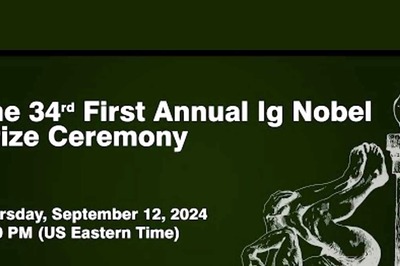
views
New York: The reconnection of power at the earthquake-damaged reactors in Japan is a big step in managing the nuclear crisis, experts said on Monday, but concerns about radiation in the air, seawater and food showed the dangers are far from over.
Plant operator Tokyo Electric Power Co (TEPCO) on Monday said radiation at much higher levels than normal was found in the Pacific Ocean near the Fukushima Daiichi nuclear plant, which may have been related to rain in the area and the hosing of the reactors with seawater.
Some nuclear experts however questioned whether TEPCO might be dumping some of the seawater used to cool the Daiichi reactor cores and spent fuel pools back into the Pacific.
"Where does all the seawater go?" said Najmedin Meshkati, a Professor of Civil and Environmental Engineering at the University of Southern California.
"Some of the seawater is escaping as radioactive steam but we don't know what TEPCO is doing with the rest of it," Meshkati added, noting he was very disappointed international nuclear organizations like the International Atomic Energy Agency (IAEA) has not said much about what was happening with the seawater.
Officials at the IAEA said they did not know what TEPCO was doing with the seawater but were asking Japanese authorities and would issue an update as soon as they had any information.
In the United States, meanwhile, the US Nuclear Regulatory Commission said the crisis at the Daiichi plant appeared to be close to stabilizing. The crisis started on March 11 when a massive earthquake and tsunami left the plant with no power to cool uranium fuel in the reactor cores and spent fuel pools.
"I would say optimistically that things appear to be on the verge of stabilizing," said Bill Borchardt, chief of operations at the NRC.
Power to plant
Engineers have rigged power cables to all six reactors at the Fukushima complex.
But TEPCO temporarily postponed efforts to cool the Unit 3 reactor this morning following a brief release of grey smoke from the building. Unit 3 is the only reactor using a small amount of highly radioactive plutonium fuel.
Robin Grimes, head of the centre for nuclear engineering at Imperial College in London, said the smoke did not seem to be accompanied by a spike in radiation readings.
"There is more than a glimmer of light at the end of the tunnel," he said.
Others also said they saw improvement.
"Things are beginning to trend in the right direction. TEPCO will need to get electrical power back on line to all six reactors and they will have to make sure that components are working," Mark Prelas, Director of Research for the Nuclear Science and Engineering Institute at the University of Missouri.
"For those not working they will need to bring in parts. The hope is that no major components will need to be replaced. This would be time consuming since the workers might have to take shifts in elevated radiation areas."
Food and water
Away from the plant, mounting evidence of radiation in vegetables, water and milk spread jitters among Japanese and abroad despite official assurances levels were not dangerous.
Radioactive iodine in the sea samples was 126.7 times the allowed limit, while cesium was 24.8 times above the limit, Kyodo news agency reported.
That still posed no immediate danger, TEPCO said.
"It would have to be drunk for a whole year in order to accumulate to one millisievert," a TEPCO official said, referring to the standard radiation measurement unit.
People are generally exposed to about 1 to 10 millisieverts each year from background radiation caused by substances in the air and soil.
The World Health Organization said radiation detected in food - such as vegetables and milk - was worse than previously thought. Most toxic has been radioactive iodine and indications of radio-cesium.
"The few measurements of radiation reported in food so far are much lower than around Chernobyl in 1986, but the full picture is still emerging," said Malcolm Crick, Secretary of the UN Scientific Committee on the Effects of Atomic Radiation, referring to the world's worst nuclear power accident at Chernobyl in the Ukraine.
Jim Smith, a leading expert on Chernobyl at Britain's Portsmouth University, said that the measurements from food and water were important because they helped confirm that "there has been a very serious release of radioactivity" at Fukushima.
"This doesn't mean that consumption of these products is necessarily an immediate threat, as limits are set so that foodstuffs can be safely consumed over a fairly long period of time," he said.
The situation "remains very serious," Yukiya Amano, head of the UN atomic agency, said, adding, "I have no doubt that this crisis will be effectively overcome."

















Comments
0 comment